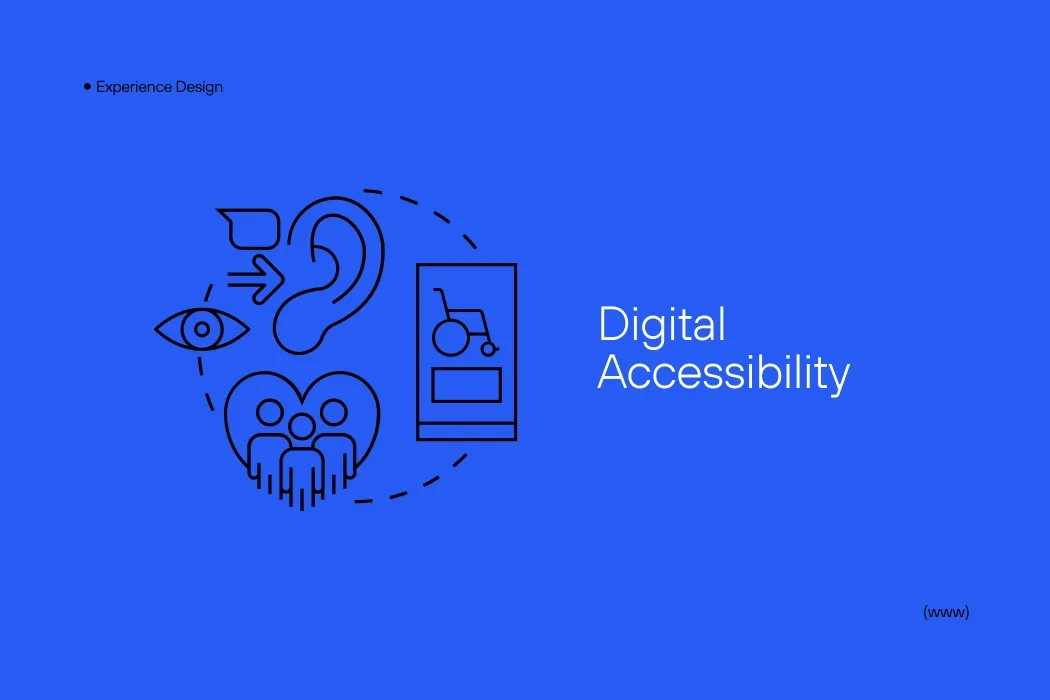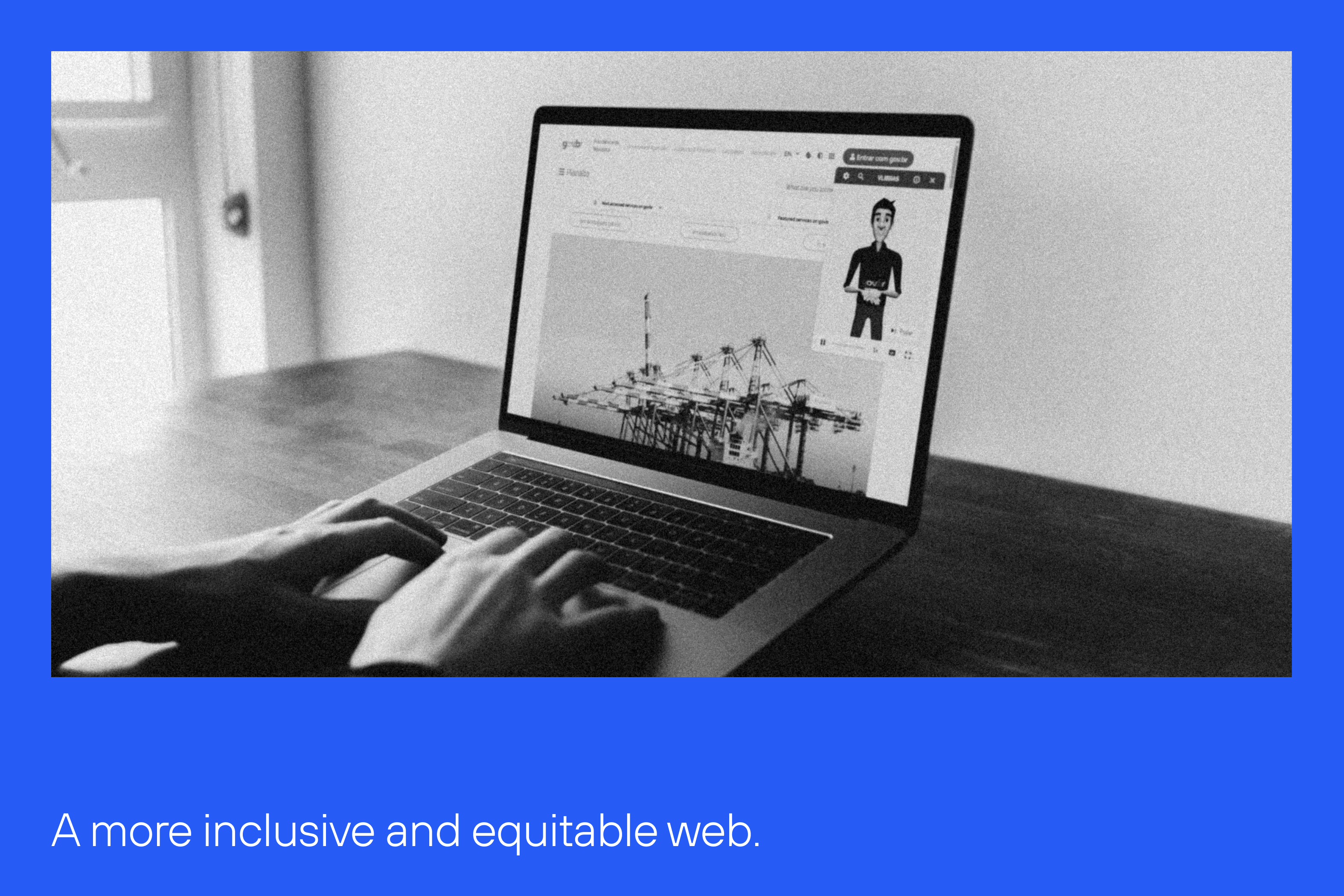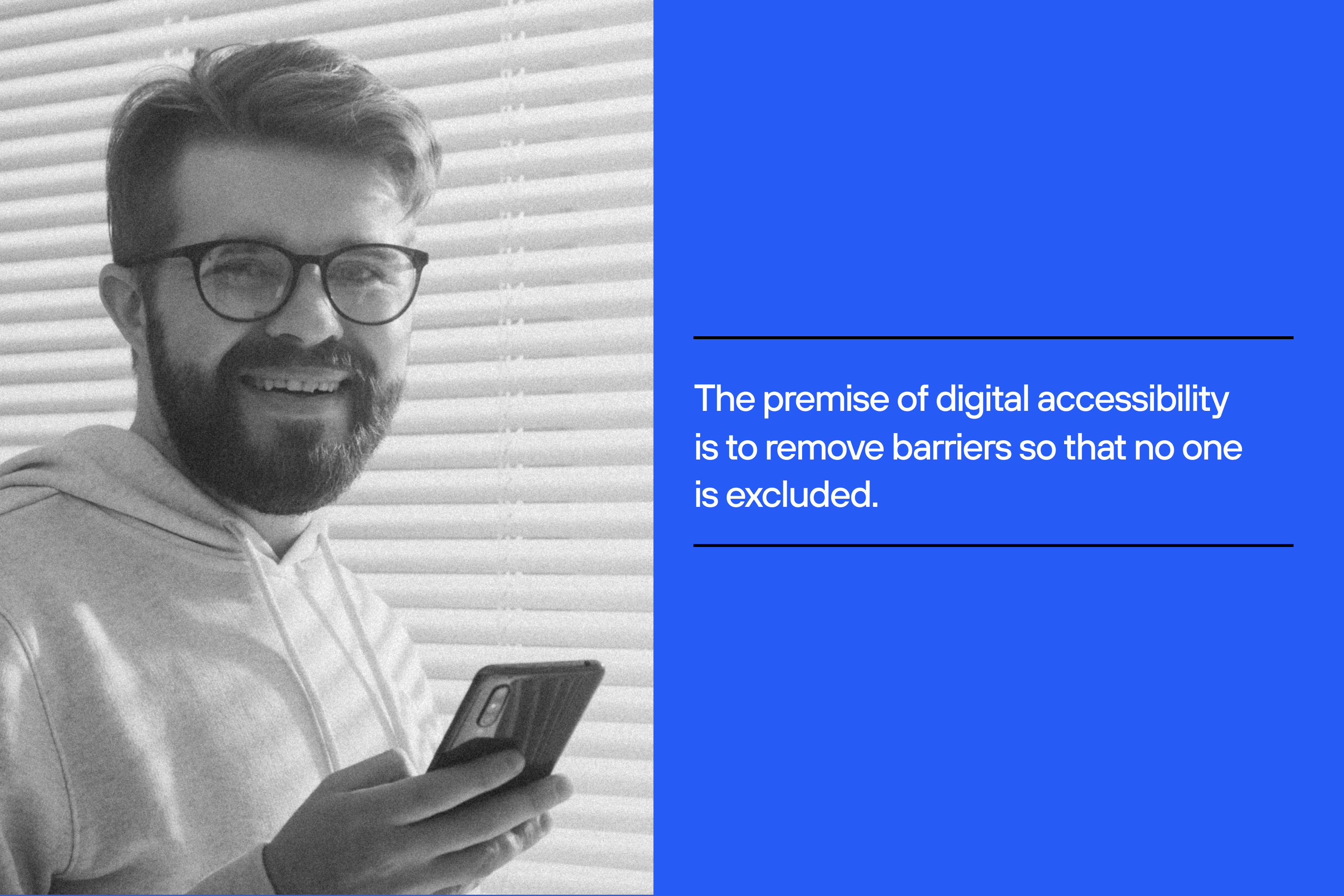
Have you ever wondered how a blind person navigates a website? Or how someone with a hearing impairment understands a video without captions? What about people with partial motor, cognitive, or visual limitations - can they fill out digital forms with ease? These are fundamental questions when we talk about digital accessibility, an increasingly important issue in a hyper-connected world.
In Brazil, the disabled population has been estimated at 18.6 million, taking into account people over the age of 2, which represents 8.9% of the population in this age group, according to IBGE. This is a significant group that, if neglected in the digital environment, will not only be excluded from full participation in the information society, but will also lose out on potential customers and sales. If we look at this data on a global scale, the need becomes even greater.
In this article, you will learn more about what digital accessibility is, why it is so important to businesses and society, what international and national standards guide its implementation, and how to make your company's digital presence a more inclusive space. Follow along!
What is digital accessibility?
Digital accessibility is the guarantee that all people, regardless of their physical, sensory or intellectual conditions, can access, understand and interact with digital content on websites, applications, online platforms and more. It is essential to ensure technical compliance and promote fair access to the technologies, information and services available on the web.
Beyond legal compliance, digital accessibility is a core value that strengthens brands. Companies that invest in an inclusive digital environment extend their reach, attract new audiences, and make genuine connections with all users, including those without disabilities who value the issue.
Promoting digital accessibility means developing interfaces and products that can be used by people with permanent disabilities, such as low vision, deafness, or motor limitations, as well as those with temporary conditions, such as a broken arm, or contextual conditions, such as difficulty navigating in brightly lit environments. This approach democratizes interaction with the digital world, providing more equitable, efficient, and human experiences for everyone.
I want to test the accessibility of my website
Brazilian laws and regulations
Few people know that digital accessibility in Brazil is supported by the Brazilian Law for the Inclusion of People with Disabilities (Law No. 13.146/2015), which stipulates that digital portals and services offered by companies or public entities must be accessible.
The Electronic Government Accessibility Model (eMAG) complements this legislation by providing guidance on good technical practices, based on the international WCAG guidelines. Failure to comply with these standards by public and private entities can result in legal sanctions and brand damage.
The Web Content Accessibility Guidelines are one of the most important internationally recognized technical guidelines. Developed by the World Wide Web Consortium (W3C), they establish objective criteria for making digital content accessible, usable, understandable, and robust for everyone.
The WCAG is currently in version 2.2 and is divided into levels of compliance:
- A (minimum)
- AA (recommended)
- AAA (maximum)
Each level represents a more advanced level of accessibility, with AA being the most widely adopted standard in public policy and the private sector.
Everyone's right, every company's responsibility
Promoting digital inclusion means recognizing that it is a fundamental human right. It is up to businesses to understand that accessibility is not only a strategic and competitive advantage, but also an ethical and social obligation. By adopting accessibility practices, companies are demonstrating a commitment to diversity and creating experiences that work for all users.
From a business perspective, investing in digital inclusion brings significant benefits: it reinforces corporate social responsibility, strengthens brand reputation, extends the reach of products and services, and reduces legal risk. Accessible practices have a positive impact on metrics such as engagement, conversion rate, and time spent on digital platforms. Studies show that inclusive companies are 1.7 times more likely to be innovation leaders.

What does an accessible website need?
The premise of digital accessibility is to remove barriers so that no one is excluded. And for the experience to be truly inclusive, it is essential to adopt good design and development practices from the start of the project, putting the user at the center and paying attention to the diversity of profiles and particularities.
An accessible website should consider the following aspects:
- Use of semantic HTML: well-defined structure with correct headings (H1-H6), making it easier to navigate and understand the hierarchy of information.
- Adequate color contrast: readable for people with visual impairments or color blindness.
- Efficient keyboard navigation: for users who don't use a mouse.
- Compatibility with assistive technologies: such as screen readers that rely on correct labeling and logical reading order.
- Text alternatives: using alternative text in images and transcriptions or captions for video and audio.
- Accessible forms: with well-identified fields and clear instructions.
- Visual focus indicators: highlight interactive elements when selected.
- Clear, objective text and inclusive language: promote understanding for all audiences.
- Adaptable and responsive content: that works well on different devices and screen sizes.
Accessibility measures make the Web more empathetic and functional, and contribute directly to search engine optimization (SEO), since search engines like Google value clean, organized structures with good semantics.

A truly open internet
Accessibility must be considered in the strategies of all companies, regardless of size or market area. Working on it from the conception phase of a digital product reduces costs and avoids rework, as well as ensuring compliance with the law and better results.
On existing sites, it is possible to carry out audits and apply improvements gradually and effectively. In this way, it is possible to work on digital inclusion and improve the brand's reputation.
At Dexa, we have a technical team specialized in digital accessibility; we are ready to turn guidelines into real, functional and inclusive experiences.
